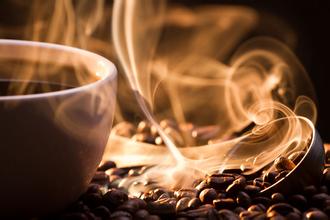Burundi Coffee Flavor Description Grind Scale Variety Treatment Area Estate Introduction
Description of Burundian Coffee Flavor, Grinding scale, Variety treatment, introduction to manors in production areas
Coffee and tea exports are currently the only mainstay of the country's economy, so in 2013, Ben and his wife Kristy started the Long Miles Coffee Project (LMCP), hoping to change the quality of local coffee and people's lives. In 2015, their coffee won third and eighth place in the Burundian COE Cup, and roasters around the world affirmed Burundi's potential.
Recently in Shanghai, Ben told us his story and showed us a passionate traditional Burundian drumming show that Burundian coffee was first brought in by the Germans in the 1900s; they found that "bourbon" was the best variety to grow in the local climate, which is usually a "tropical" plateau climate with a very large temperature difference between day and night. However, due to the suspension of investment in coffee research, bourbon has become the only coffee variety left in the country and has been treated with "full washing".
The development of boutique coffee needs continuous breakthrough and innovation. In 2014, Long Miles Coffee Project (LMCP) began to use sun treatment and honey treatment for their coffee, which made professional coffee cup testers overjoyed at the taste of the coffee. According to Miss Gu Qinru, head of Latorre & Dutch Coffee Asia, "usually we can drink citrus and plum flavors in washed Burundian coffee. And this is our first cup of Burundian coffee treated with sun and honey. Its flavor turns into more complex strawberries, grapes and tropical fruits. It seems that the way it is handled is crucial to the taste of coffee.
Dry aroma (1-5): not applicable
Wet aroma (1-5): not applicable
Acidity (brightness) (1-10): not applicable
Taste (layered) (1-10): not applicable
Taste (alcohol thickness) (1-5): not applicable
Aftertaste (residue) (1-10): not applicable
Balance (1-5): not applicable
Base score (50): not applicable
Total score (maximum 100): not applicable
Strength / main attributes: medium strong / sweet, fruit flavor, spicy aftertaste.
Recommended baking degree: full city
Contrast: very similar to Kenyan coffee

Important Notice :
前街咖啡 FrontStreet Coffee has moved to new addredd:
FrontStreet Coffee Address: 315,Donghua East Road,GuangZhou
Tel:020 38364473
- Prev

Introduction to the flavor description of the regional treatment method for the variety characteristics of Columbia coffee manor
Columbia Coffee Manor Variety characteristics Regional treatment Flavor description Taste Manor, which represents the growing environment, altitude, climate, planting and treatment of beans. In particular, the award-winning manors may have good feng shui, or the farmers may have a lot of experience in planting, which is more or less of reference, such as the Emerald Manor and Morgan Manor in Panama. Countries in Africa
- Next

Starbucks Coffee Bean processing method Water washing method Price Flavor description Variety producing area introduction
Starbucks Coffee Bean processing method washing method Price Flavor description Variety producing areas introduce the so-called honey treatment (Miel Process in Spanish), which is said to mean the process of making raw beans with a mucous membrane for sun-drying. After the outer pulp of the coffee bean is removed, there will be a layer of sticky jelly. The traditional method of washing is to wash it off with clean water, but because of some high-altitude areas.
Related
- Detailed explanation of Jadeite planting Land in Panamanian Jadeite Manor introduction to the grading system of Jadeite competitive bidding, Red bid, Green bid and Rose Summer
- Story of Coffee planting in Brenka region of Costa Rica Stonehenge Manor anaerobic heavy honey treatment of flavor mouth
- What's on the barrel of Blue Mountain Coffee beans?
- Can American coffee also pull flowers? How to use hot American style to pull out a good-looking pattern?
- Can you make a cold extract with coffee beans? What is the right proportion for cold-extracted coffee formula?
- Indonesian PWN Gold Mandrine Coffee Origin Features Flavor How to Chong? Mandolin coffee is American.
- A brief introduction to the flavor characteristics of Brazilian yellow bourbon coffee beans
- What is the effect of different water quality on the flavor of cold-extracted coffee? What kind of water is best for brewing coffee?
- Why do you think of Rose Summer whenever you mention Panamanian coffee?
- Introduction to the characteristics of authentic blue mountain coffee bean producing areas? What is the CIB Coffee Authority in Jamaica?

